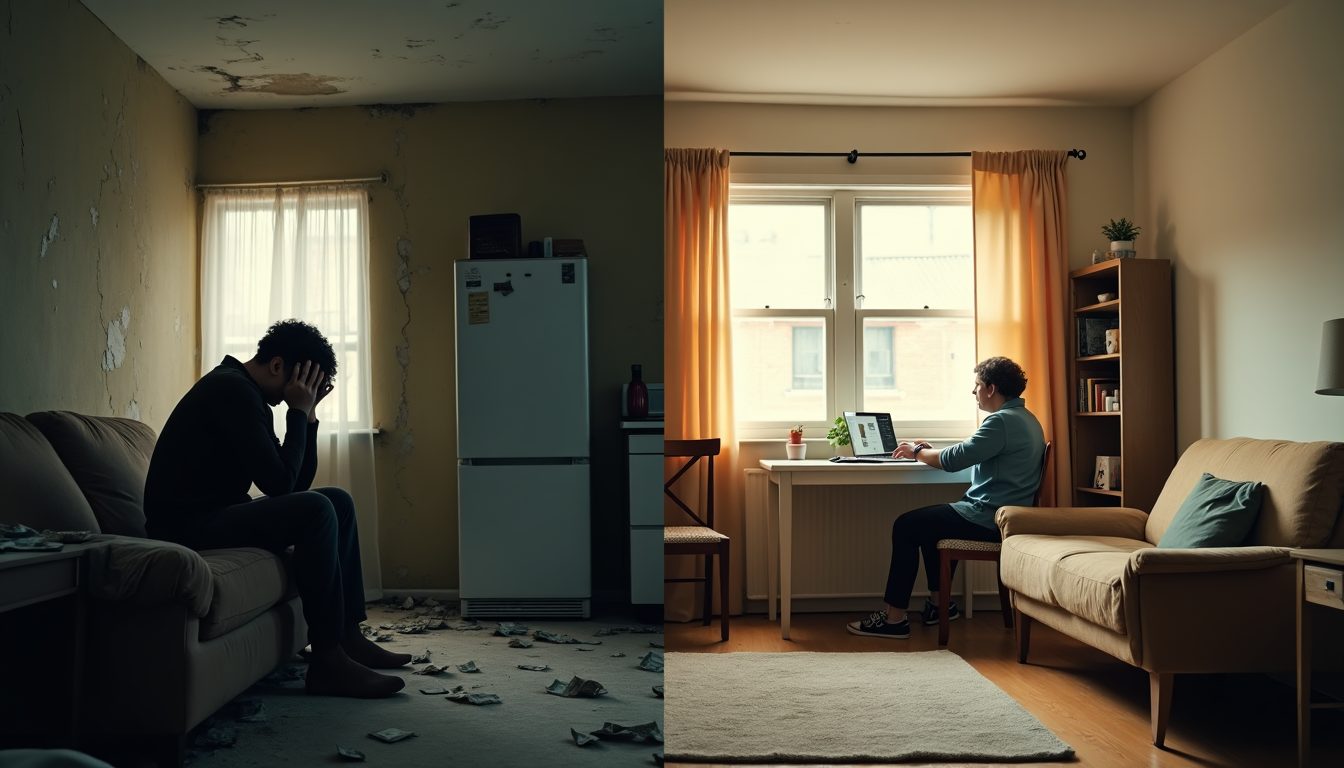How Poverty and Mental Health Shape Our Society in 2025
British classrooms paint a troubling picture – nine children in every class live in poverty. These children’s mental health suffers dramatically. Their risk of developing serious mental health issues by age 11 is four times higher than children from wealthy families.
The connection between poverty and mental health grows stronger each year. Statistics from 2023 reveal 1.8 million households faced destitution. People living in the poorest areas are three times more likely to die by suicide than those in wealthy regions. Mental health struggles and debt create a vicious cycle, as one in four people with mental health conditions deal with serious debt problems.
This detailed study looks at how financial hardship affects psychological wellbeing. It delves into current patterns and groundbreaking solutions that reshape the scene through policy changes in 2025.
The Evolving Relationship Between Poverty and Mental Health
The stark reality of mental health shows a clear social and economic pattern. People in the bottom 20% income bracket face mental health issues two to three times more often than those at the top. This gap has grown substantially in the last decade. Children and young people feel these effects most deeply.
Current statistics revealing the link between poverty and mental health
People who live in Britain’s poorest areas need mental health services twice as much as those in wealthy areas. Young people from the poorest homes are 4.5 times more likely to deal with severe mental health problems than their wealthy peers.
These issues reach far beyond personal struggles. Mental health conditions among young people cost £1.58 billion in the short term, while long-term costs reach £2.35 billion. The government spends £24-27 billion yearly on workplace mental health issues. The economy loses between £70-100 billion overall.
How this relationship has changed from 2020 to 2025
The link between poverty and mental health has grown stronger since 2020. About 6 million people faced deep poverty in 2022/23. Their average income fell 57% below the poverty line. This gap has grown by almost two-thirds over the last 25 years.
Some groups face even tougher challenges. To cite an instance, see these statistics:
- About 2.4 million disabled people in poverty live with long-term mental health conditions – that’s half of all disabled people in poverty
- People with mental health conditions face a 50% poverty rate, much higher than the 29% rate for those with physical disabilities
The bidirectional nature of poverty and mental health problems
Research shows poverty and mental health create a two-way street. Money problems like losing a job or poor harvests hurt mental health. Mental illness then affects earning potential by reducing work output, raising healthcare costs, and making it harder to succeed in education.
Several factors connect these issues. People in poverty deal with unpredictable income and expenses, which creates constant stress. Poor neighborhoods expose residents to pollution and make it hard to sleep well. Children who grow up in poverty often face cognitive challenges and mental health issues as adults because of poor nutrition and other stresses.
Jobs tell a clear story. Quality employment helps mental health, but low-paying or unstable work can harm it. People who receive housing benefits struggle twice as much with common mental health problems compared to others. Informal caregivers lose about £414 monthly, which pushes many into poverty.
Economic Pressures Creating New Mental Health Challenges
Money worries have hit record levels. Almost half of adults say their mental health suffers because of rising living costs. Economic pressure affects people’s well-being through multiple channels that create complex challenges.
Rising cost of living and its psychological effect
Recent surveys paint a grim picture – one in four people can’t afford to heat their homes. Mental health helplines saw calls about money problems jump 10% during winter 2022/23. People now face tough choices and often give up activities that protect their mental health:
- 30% don’t sleep as well
- 23% spend less time with friends
- 15% cut back on hobbies
- 12% exercise less often
Housing insecurity as a mental health determinant
Housing problems significantly affect mental health outcomes. Women who face housing uncertainty are 6.7 times more likely to have poor mental health. This number jumps to 9.4 times for men compared to the general population. Research shows homeowners typically have better mental health than renters.
Renters and people with unstable housing face multiple challenges. Anxiety and depression rates double in the most deprived areas. Housing issues show up in several ways:
- Damp and mold harm physical and mental health
- Unstable tenancies create ongoing stress
- Overcrowding disrupts sleep
- Problem neighbors increase anxiety
Digital divide and access to mental health resources
Digital mental health tools have grown faster, but access barriers create new healthcare inequalities. More people with serious mental illness now use smartphones and the internet. Yet millions of low-income individuals, older adults, and marginalized communities lack reliable internet access.
The digital divide hits people with severe mental illnesses harder. They often struggle with both tech access and know-how. Cost creates another barrier – many mental health apps limit free features. Full access requires monthly payments between £1.59 and £8.

